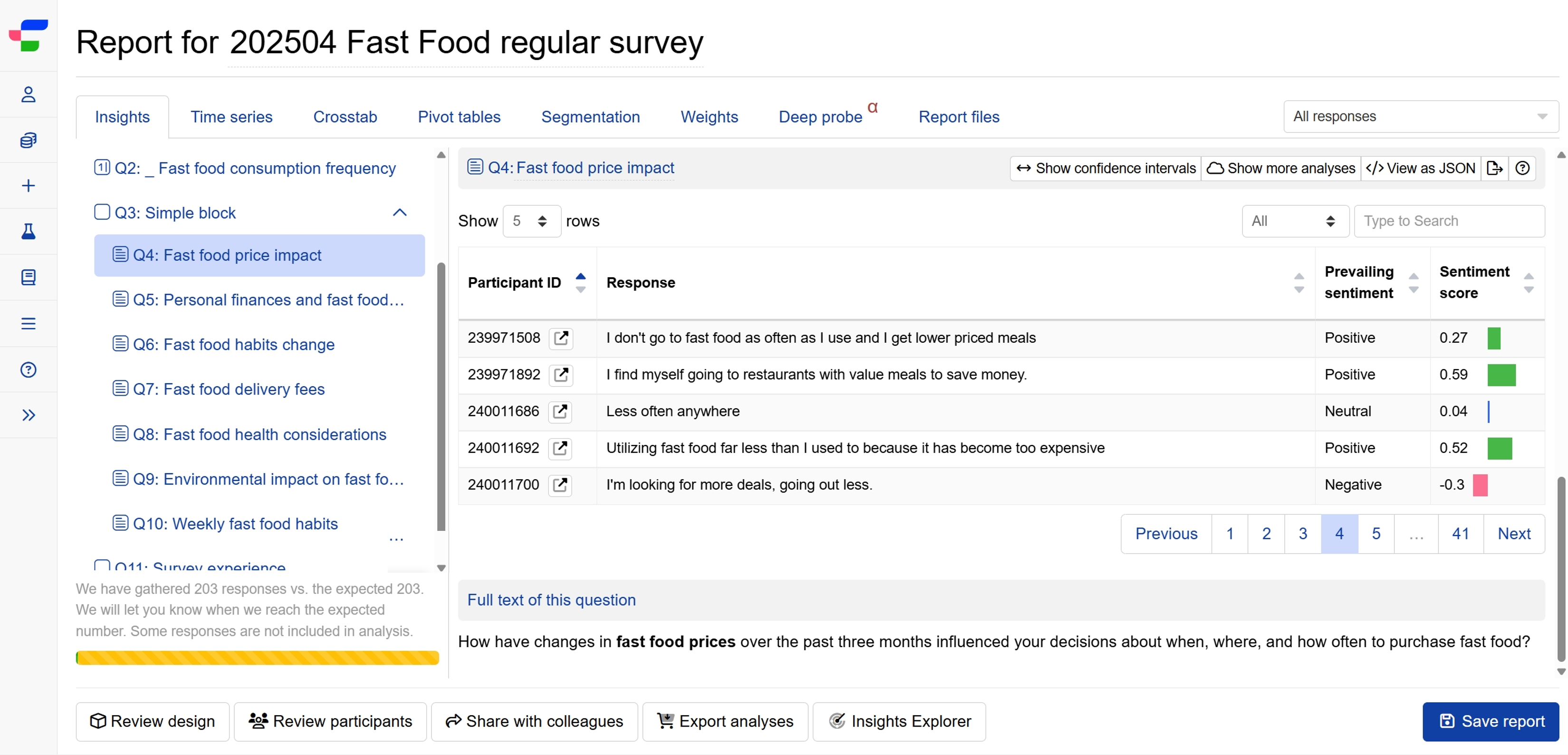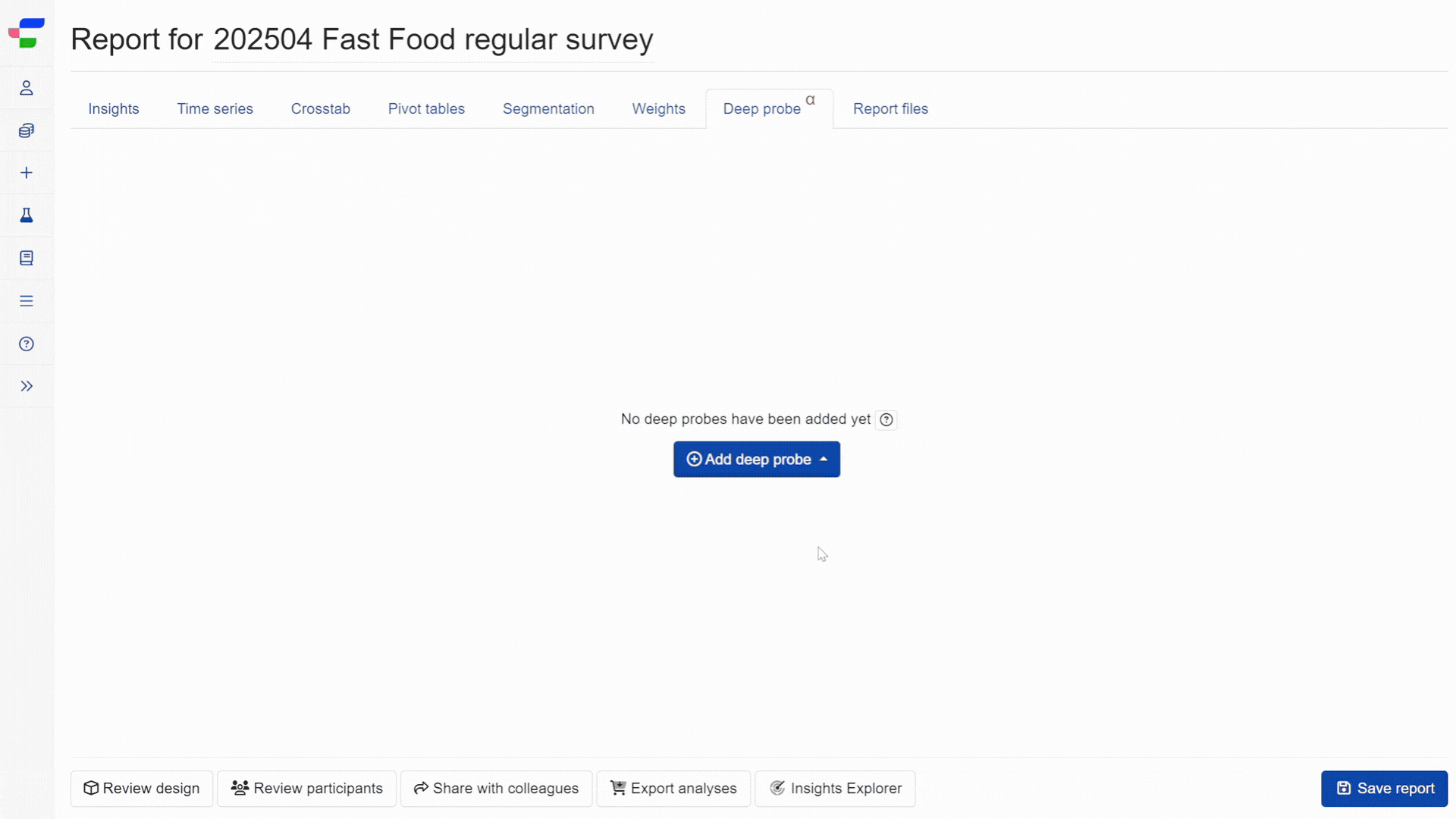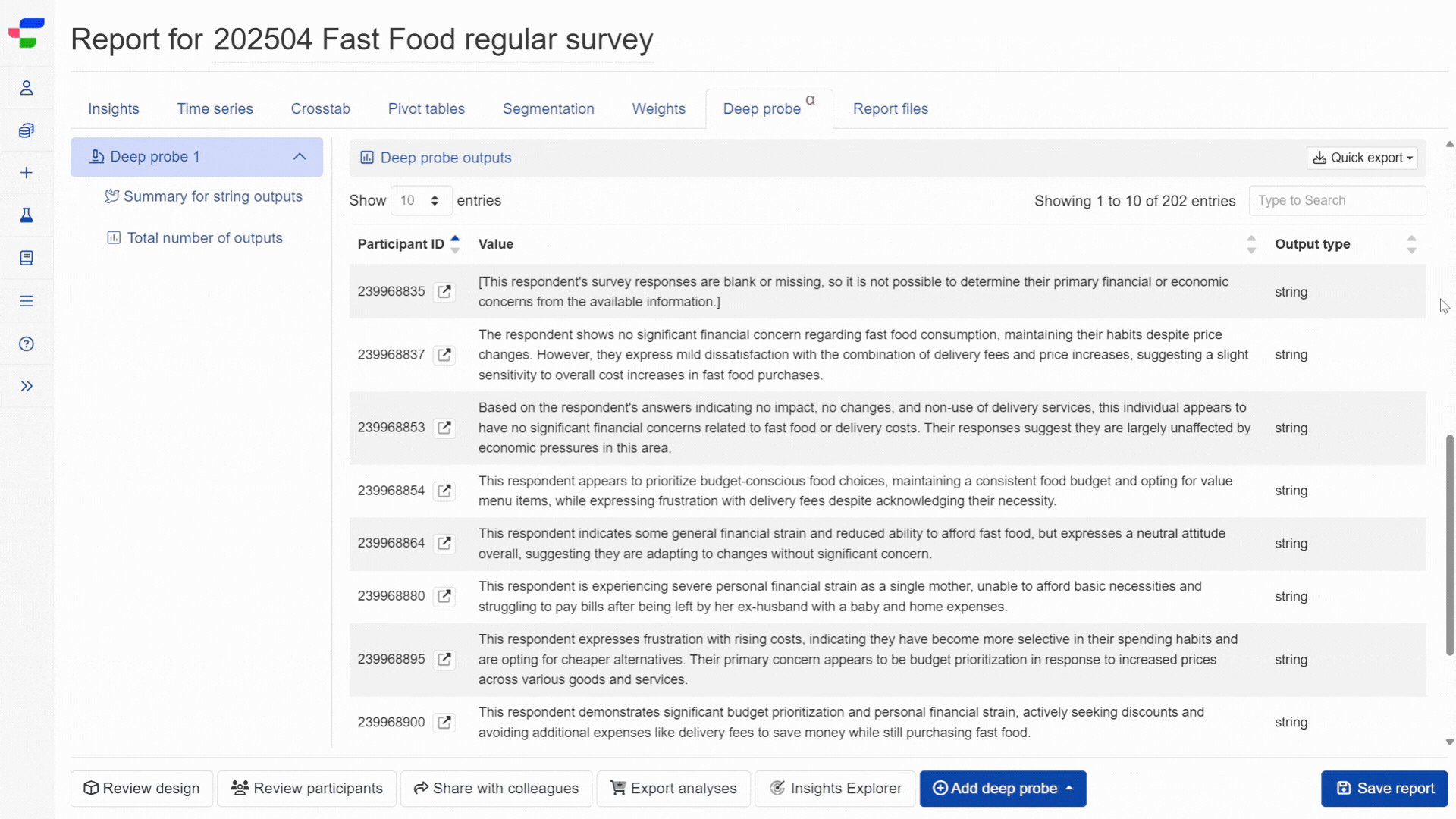Analysing selected responses of individual respondents
Survey reports typically show aggregated data across all participants, but understanding individual response patterns requires manually reviewing each person’s complete answers. Deep probe automates this process, analysing individual participants’ responses to identify their specific preferences, behaviours, and characteristics.
The example below shows you how Deep probe can help you identify specific findings about individual respondents across all their responses.
Working example: Understanding financial concerns of respondents
A fast food chain surveyed 202 customers about their dining habits and concerns. Rather than just seeing overall trends, they wanted to understand each customer’s specific financial concerns to better inform their overall pricing strategy.

To save time from going through individual respondent answers, Deep probe’s LLM analysis was used to summarise the primary reason for reach respondent.
Deep probe setup
- Navigate to the Deep probe tab in the experiment report and click .
- Select .
- Describe what you want to learn about each respondent. For example,
What is the primary financial or economic concern of this respondent? - The system suggests categories as output type with options such as “Personal financial strain”, “Increased fast food prices”, “Delivery fee concerns”, etc. However, after reviewing the suggested categories, researchers can accept the recommendations or modify them based on their analysis objectives. In this example, the researcher chose string as an output type to generate text summaries rather than categories.

Generated prompt for analysis
Based on the settings, the system generates an analysis prompt. Researchers can review and edit this prompt before processing begins.
The following shows an example prompt generated by the LLM based on the request in this example.
Request: What is the primary financial or economic concern of this respondent?
Response:
Outputs overview
The Deep probe outputs generates a summary for each individual respondent. Like all AI tools, Deep probe may occasionally produce inaccurate results. Please review outputs carefully.
You can edit values and output types of these individual results if needed.

Based on these individual results, the Summary for string outputs tab presents the overall AI-generated summary identifying overall key themes and patterns across all responses.

Best practices for individual response analysis
- Analyse complete response sets rather than single questions to capture full participant context.
- Define classification criteria that account for response consistency.
- Include sufficient context in your request to guide accurate profiling.
- Use meaningful category names that clearly communicate each conclusion for stakeholder understanding.
- Layer multiple deep probe analyses to build comprehensive respondent profiles examining different dimensions.
Other example analysis requests for individual respondent analysis
Individual respondent analysis extends beyond simple classification, enabling sophisticated participant profiling across multiple dimensions:
| Example analysis request | What it reveals |
|---|---|
Does this response mention price or cost concerns? | Budget sensitivity patterns across your customer base |
What specific product features does this person discuss? | Feature preferences and priority areas for development |
Classify this response as positive, negative, or neutral | Overall sentiment distribution in your responses |
Does this response suggest the person is a frequent or occasional user? | Usage behaviour segments within your audience |
Summarise the primary needs of this respondent | Individual customer priorities |
Other Deep probe use cases
You can also read about: